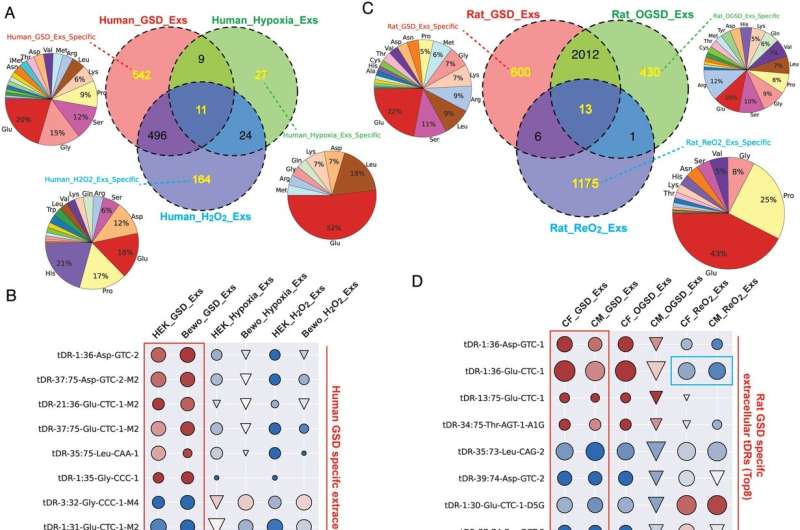Molecules produced by cells in response to stress may be indicators of disease

The body's ability to respond to various types of stress is essential for maintaining health, and failure of such adaptive stress responses can trigger or worsen numerous diseases. New research led by investigators at Massachusetts General Hospital (MGH) and published in Advanced Science reveals that cells often release certain RNA molecules called tDRs in response to stressors, and that different tDRs may serve as markers of cellular stress in different diseases.
"RNA molecules have long been known to be the messenger between DNA (the genetic code) and proteins (the functional molecules of the cell); however, the past decade has seen investigators discover new functions of RNAs that do not translate into proteins鈥攖he so-called non-coding RNAs," says senior author Saumya Das, MD, Ph.D., co-director of the Resynchronization and Advanced Cardiac Therapeutics Program at MGH.
Das notes that there's a growing list of non-coding RNAs with diverse functions, and among these, a new class of RNAs has been found to arise from so-called transfer RNAs that normally function to help make proteins from classic messenger RNAs. These RNAs, called tRNA-derived small RNAs (tDRs), appear to be generated when larger "parent" tRNAs are cut into smaller versions by stress-activated enzymes.
By studying a variety of human and rat cells under three stressors鈥攏utritional deprivation, low oxygen and oxidative stress鈥攖hat are often present in many disease states, Das and his colleagues generated a comprehensive landscape of tDRs that can be found inside cells (cellular) and outside cells (extracellular) during different stress responses. They also found that key proteins called RNAses are important for the generation and stability of extracellular tDRs.
"While tDRs play important roles in cellular functions, we have also found that tDRs are released by cells where they may serve as markers of cellular stress in different diseases," says lead author Guoping Li, Ph.D., an instructor in medicine at MGH and Harvard Medical School. "We saw that different types of stress signals can affect the cellular and extracellular tDRs in different types of cells, and that there are 'signatures' of these stress signals."
The team created an atlas of the stress signatures for both cellular and extracellular tDRs that can be used not only as indicators of disease but also as a starting point for scientists who are interested in studying the roles of distinct tDRs in cancer, fibrosis, and other conditions. Das and colleagues are focusing on one such tDR and its role in kidney disease.
More information: Guoping Li et al, Distinct Stress鈥怐ependent Signatures of Cellular and Extracellular tRNA鈥怐erived Small RNAs, Advanced Science (2022).
Journal information: Advanced Science
Provided by Massachusetts General Hospital



















